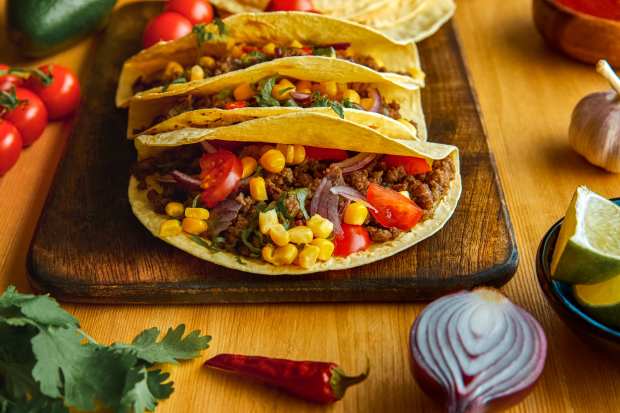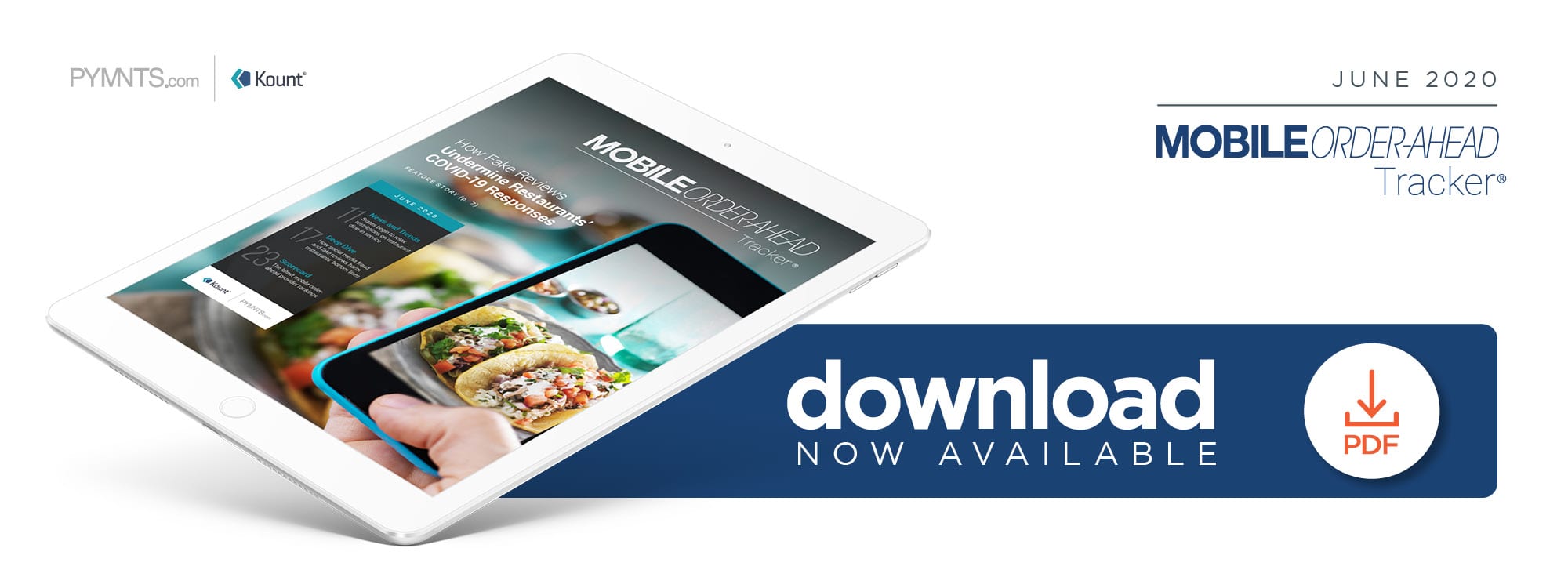How Fake Reviews Undermine Restaurants’ COVID-19 Responses

A third of consumers refuse to order from a restaurant that rates less than four stars on online review websites. Too often, unfortunately, reviews listed on social media platforms are fraudulent, discouraging customers at no fault of the restaurants themselves. In this month’s Mobile Order-Ahead Tracker, PYMNTS talked to bartaco co-founder Scott Lawton about how QSRs can prevent fake reviews from impacting their mobile-order ahead volume.
The COVID-19 pandemic is creating immense restaurant industry ramifications. Months of social distancing guidelines, stay-at-home orders and dine-in bans have crippled quick-service restaurant (QSR) revenue streams, with experts predicting the space will lose $240 billion by the end of 2020.
Restaurants have thus been leaning heavily on mobile order-ahead options to stay in business during the outbreak, turning to to-go orders, curbside pickup and delivery options to make sure hungry customers are able to get the items they crave.
Connecticut-based taco QSR bartaco is one chain working to adapt its business model to the new normal, recently introducing delivery services at its 21 locations across the U.S. It recognized encouraging existing customers who largely ate at bartaco locations to shift to mobile ordering and delivery would be difficult, however, and has since placed emphasis on ensuring their mobile ordering experiences are similar to those provided in its dining rooms.
“With restaurants shifting to takeout only due to the pandemic, it’s more important than ever that guests’ digital experience be on point with the experience they would receive at restaurants,” Scott Lawton, the restaurant’s co-founder, told PYMNTS in a recent interview.
Attracting first-time patrons during the pandemic, when consumers are spending most of their time at home, has required enhanced online efforts, however, and review websites like Yelp have played a vital role. Issues arise because not every review is legitimate, making it important that restaurants counter fake entries — or risk losing a valuable resource for generating business.
Shifting To Mobile Ordering And Delivery
Restaurants were forced to quickly adapt their business models to adjust to new realities amid the COVID-19 outbreak. Many have partnered with third-party apps to provide digital ordering services, while others have revamped their own offerings or designed new ones. Delivery has played a role in these transformations, with restaurants that had not offered the service quickly introducing it to protect their revenue streams.
“One of the biggest challenges is that we didn’t offer delivery at all prior to COVID-19, and we were moving as quickly as possible to offer our guests food delivered to their homes through an easy in-app, branded experience,” Lawton explained. “It was important for us to update [our] app in a way that made it easy to navigate while enabling our guests to quickly place delivery orders through our app. As such, we paid great attention to the design and [user experience] process a customer would need to go through to place an order.”
Having a slick user interface and smooth mobile ordering system is not enough to attract customers, though. Generating loyalty is also necessary so customers revisit their favorite QSRs and continue to generate business, and a personal touch through social media rather than relying only on corporate branding can help.
“Our goal is to always provide as much of a personalized experience for our guests as possible, no matter if it’s in person or online,” Lawton noted. “We’re very active in reaching out to our guests online whether via Instagram, Facebook and Twitter and asking them about their experiences or making recommendations for what they should order during their next visit. It’s a more personal experience than just us liking a guest’s post or sending out a check-in survey to ask how their experience was.”
Attracting first-time customers is an entirely different animal, however. Consumers often turn to online reviews to decide where to place their food orders, but this can be bad news for QSRs if those reviews are not trustworthy. Fake reviews come from various sources — from scammers looking to score refunds to other restaurants looking to sabotage their competition — and could scare off potential customers before they even give restaurants a chance to prove themselves.
How Fake Reviews Damage QSRs
Online reviews are vital in today’s restaurant industry. Studies have shown 92 percent of consumers read them, for example, and that 33 percent refuse to eat at a restaurant with a score of fewer than four out of five stars. Fifty-six percent of restaurant owners have even said reviews are more effective drivers of traffic and revenue than traditional advertising.
“We crave feedback from our guests,” said Lawton. “It’s so important for us to learn about guests’ experiences, not only about where did we succeed, but most importantly where can we improve.”
That task has grown much more difficult over the past 20 years as restaurant reviews shifted from professional critics at newspapers to anyone with a Yelp account and a keyboard. Seventy-seven percent of customers now say they prefer peer-made reviews to professional ratings, but such assessments’ ease of production also makes them incredibly easy to fake. Yelp estimates up to one-fifth of all reviews on its website are fraudulent, a figure that does not count the 25 percent of reviews that are removed as fakes before they are even posted.
Lawton believes the best way to avoid fake reviews is by maintaining direct communication lines with customers through emails, telephone calls and social media messages. This makes certain a real person is behind the review and that the individuals’ negative experiences will be corrected on future orders.
“We make personal connections with each guest that leaves a review on Yelp or other platforms, either via sending a personal email or calling the guest directly,” Lawton said. “Taking these conversations to a personal level and not just a Yelp inbox message allows us to make that connection.”
Preserving connections like these will be vital to ensuring a steady revenue stream as public health and safety responses to the COVID-19 pandemic continue to create frictions for the restaurant industry. After all, customers facing a plethora of mobile ordering options are much more likely to choose the ones they know over the ones that are just rankings on websites.

